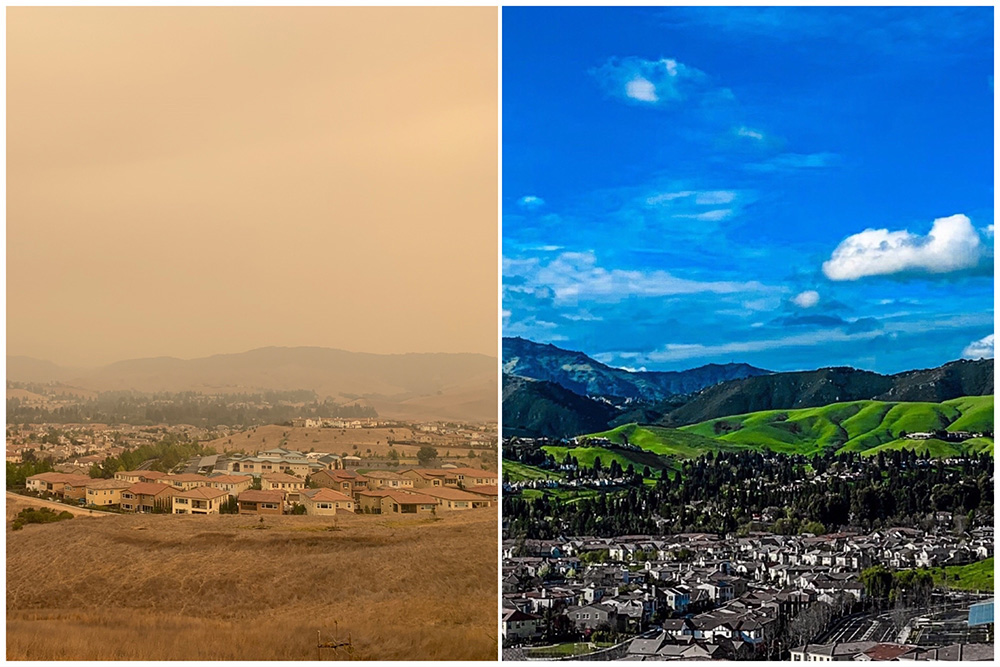A Year on Fire – is Smoke Taint a Concern for Livermore Valley?

A few times a year I return to a small bluff that overlooks Tassajara Valley with a view of Mount Diablo to the north. Today’s photograph, compared next to one taken last April, says it all. Smoke from California’s range fires hangs over the valley.
This is the worst we have seen in Livermore Valley, and raises the possibility of smoke taint. Smoke has cancelled harvests in many areas of Sonoma and Napa, and now threatens harvest in Livermore Valley.
Aroma compounds in smoke, often referred to as volatile phenols, attach themselves to the berry and bind to the sugars (become glycosylated). It is impossible to detect these aroma compounds in the bound form. It is only after fermentation, when the smoke aromas are released, that the extent of the problem becomes known. Smoke taint can make the wine unpalatable, since the compounds can smell like mold, stale cigarette ashes, and sometimes fecal matter.
We won’t know the extent, if any, of smoke taint in Livermore wines for another month or more. Our Livermore harvest was completed last week: Malvasia Bianca and Grenache. Both of these varieties were harvested for either white wine or rosé. This is comforting, since most of the smoke taint aromas are associated with fermentation on the skins. Several studies undertaken over the past decade have shown below threshold, or nondetectable levels of smoke taint compounds in wines that were fermented off the skins.
We took several precautionary steps to mitigate possible smoke taint in these wines. The Malvasia Bianca was given a gentle press cycle immediately on arrival. The free run juice was pumped to tank with minimal skin exposure. The Grenache was fractionated into free run and light press. A heavier press, for color, was separated from the light press and is being fermented in a separate tank. If, at the end of fermentation, there is no noticeable smoke taint in the heavy press, it will be blended back into the light press wine.
Our other red wines this year are from outside of the Livermore AVA. This was planned as a response to the COVID crises and not with any premonition of range fires. In the next few weeks, we are planning to harvest some Rhone varieties from Shake Ridge Vineyard in Amador County. Thus far (fingers crossed), the region has reported exceptional air quality. As an added plus, should the air quality deteriorate, Rhone varietals, for reasons not well understood, appear to be less affected by smoke taint than the Bordeaux varietals. Let us hope so.
We were not so lucky with our Wildcat Mountain Pino Noir. The bad news – the owner has cancelled the harvest because of heavy smoke exposure in Sonoma. The good news – we will retain our access to the vineyard for next year.


